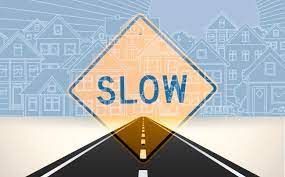 Is the stress of achieving the American dream of homeownership finally getting to a nation of homebuyers?
Is the stress of achieving the American dream of homeownership finally getting to a nation of homebuyers?
With rates still at all-time lows, the Mortgage Bankers Association (MBA) has found that overall mortgage application volume is down 4% week-over-week for the week ending May 28, 2021.
The MBA’s Weekly Mortgage Applications Survey also found that refis too are on the decline, as the Refinance Index decreased 5% from the previous week, but 6% higher than the same week one year ago. The Purchase Index decreased 3% from one week earlier, while the unadjusted Purchase Index decreased 5% compared with the previous week, and was 2% lower than the same week one year ago.
"Mortgage applications decreased for the second week in a row, with the overall index reaching its lowest level since February 2020," said Joel Kan, MBA's Associate VP of Economic and Industry Forecasting. "Tight housing inventory, obstacles to a faster rate of new construction, and rapidly rising home prices continue to hold back purchase activity. The government purchase index declined to its lowest level in over a year, and has now decreased year-over-year for five straight weeks. Purchase applications were down almost 2% from a year ago, but that was compared to the week of Memorial Day 2020."
The refinance share of mortgage activity decreased slightly to 61.3% of total applications from 61.4% the previous week. The adjustable-rate mortgage (ARM) share of activity decreased to 3.7% of total applications.
The FHA share of total applications increased to 9.6% from 9.1% the week prior. The VA share of total applications decreased to 10.9% from 11.2% the week prior. The USDA share of total applications remained unchanged from 0.4% the week prior.
Ticket prices remain high on homes nationwide, with CoreLogic’s latest Home Price Index (HPI) and HPI Forecast for April 2021 reporting home prices increasing 13% year-over-year compared to April 2020, a 2.1% rise compared to March 2021.
Redfin found that 51% of homes sold for more than their list price for the four-week span ending May 23—up from 26% the same period a year earlier, marking a new record for this metric. In March 2021, the latest S&P CoreLogic Case-Shiller U.S. National Home Price NSA Index from S&P Dow Jones Indices, found that for March 2021, home prices continued their rise, a 13.2% annual gain in March, up from 12.0% in February.
The rise in home prices has been spurred by a decline in inventory, as not even rates in the 3% range is reason enough to get homebuyers off the fence.
In addition to high listing prices, factors such as a depleted workforce and the rising costs of materials are factoring into these price hikes. The National Association of Home Builders (NAHB) reported that the price of lumber has tripled over the past year, forcing the price of a new single-family home to rise $35,872 on average.
“The fact that homes keep selling for more and more above asking prices goes to show that many more people want a home than there are homes for sale,” said Redfin Chief Economist Daryl Fairweather. “I don't see that changing until mortgage rates increase, which will likely happen later this year. But until then, the housing market will remain red-hot."

 theMReport.com Your trusted source for mortgage banking news
theMReport.com Your trusted source for mortgage banking news








